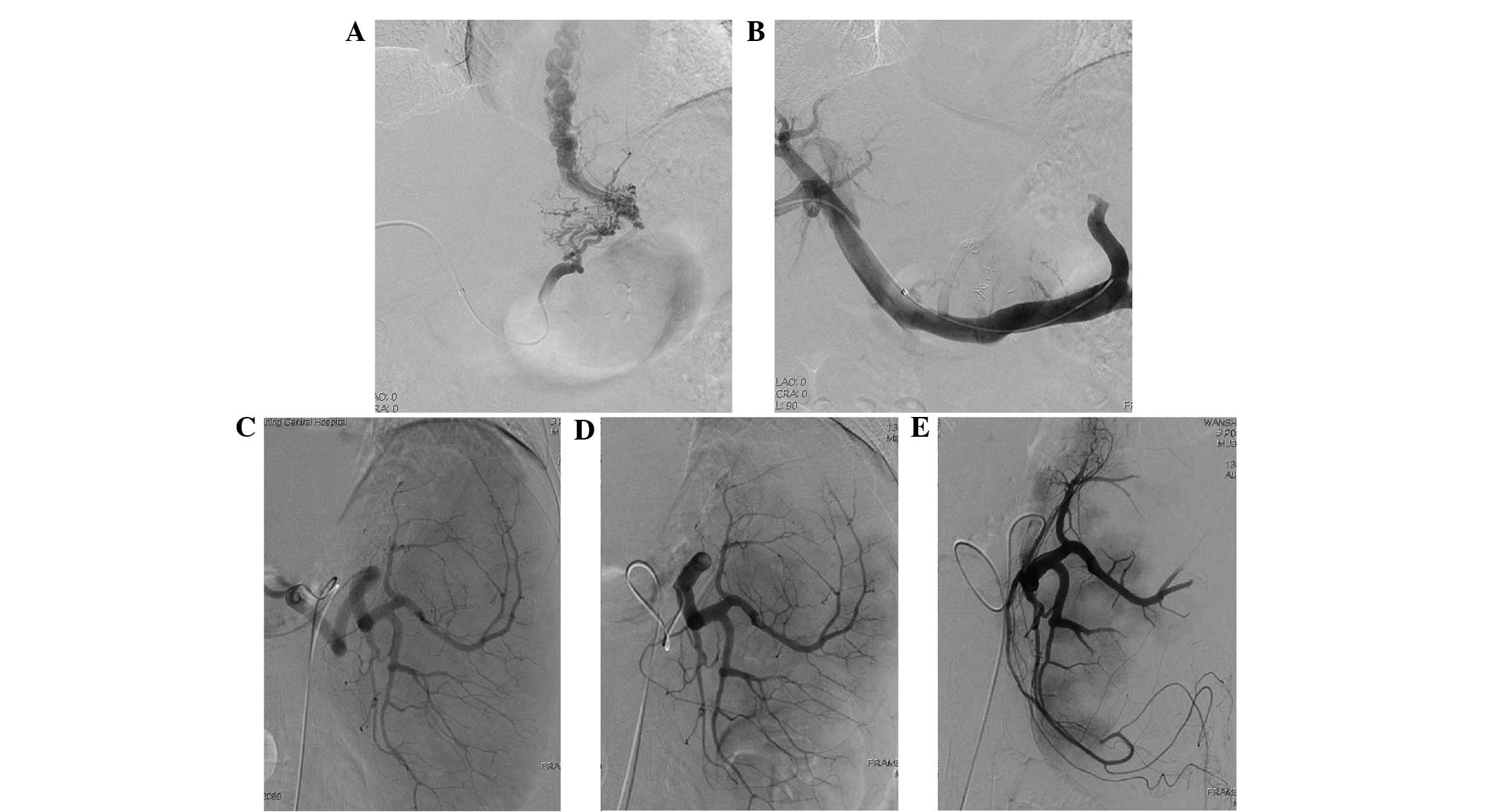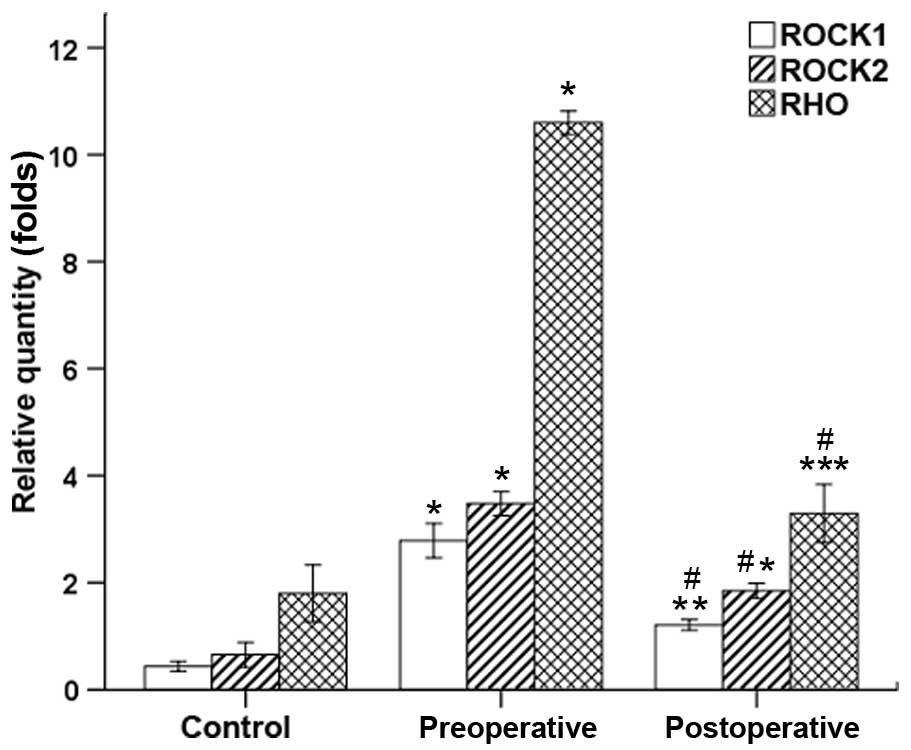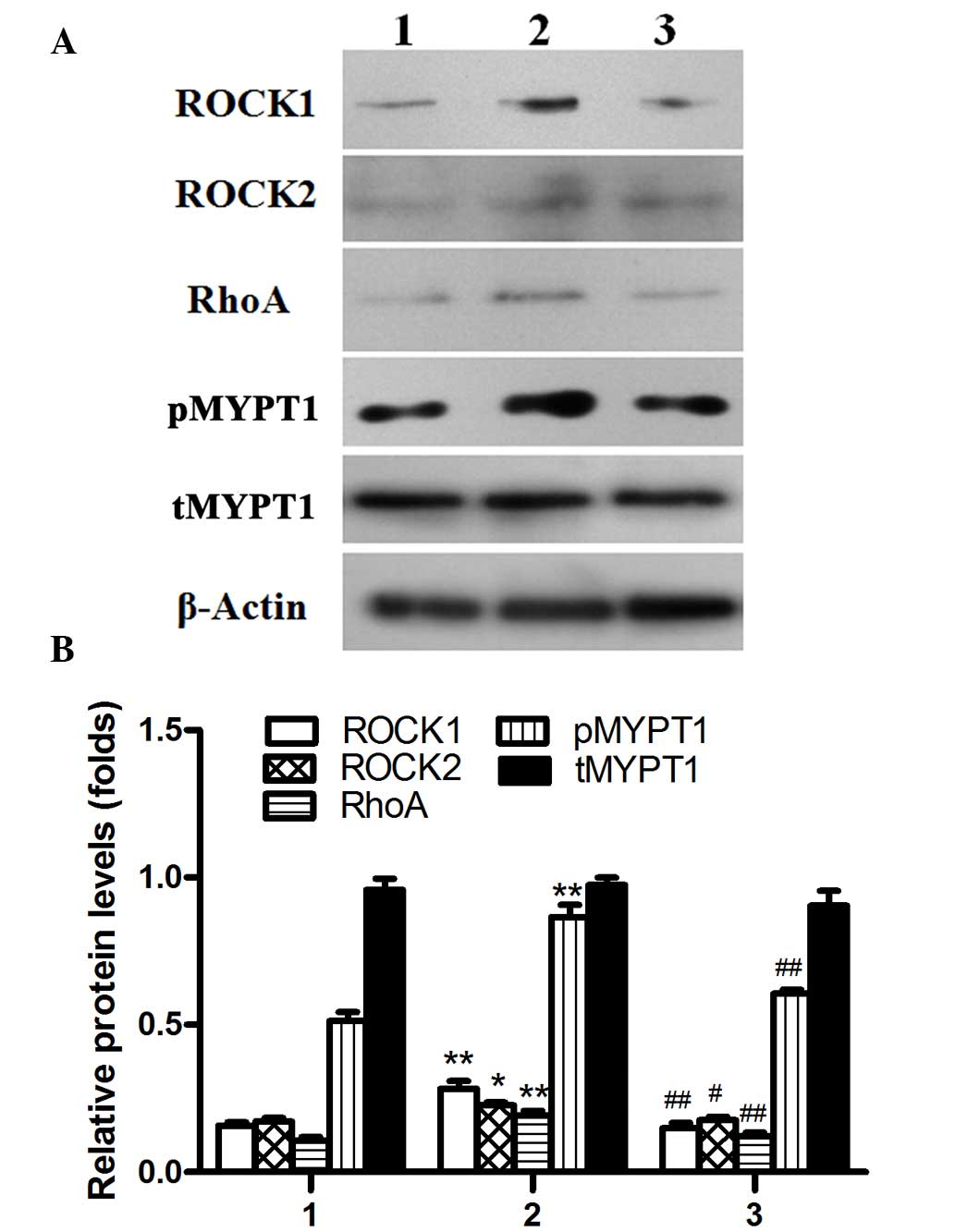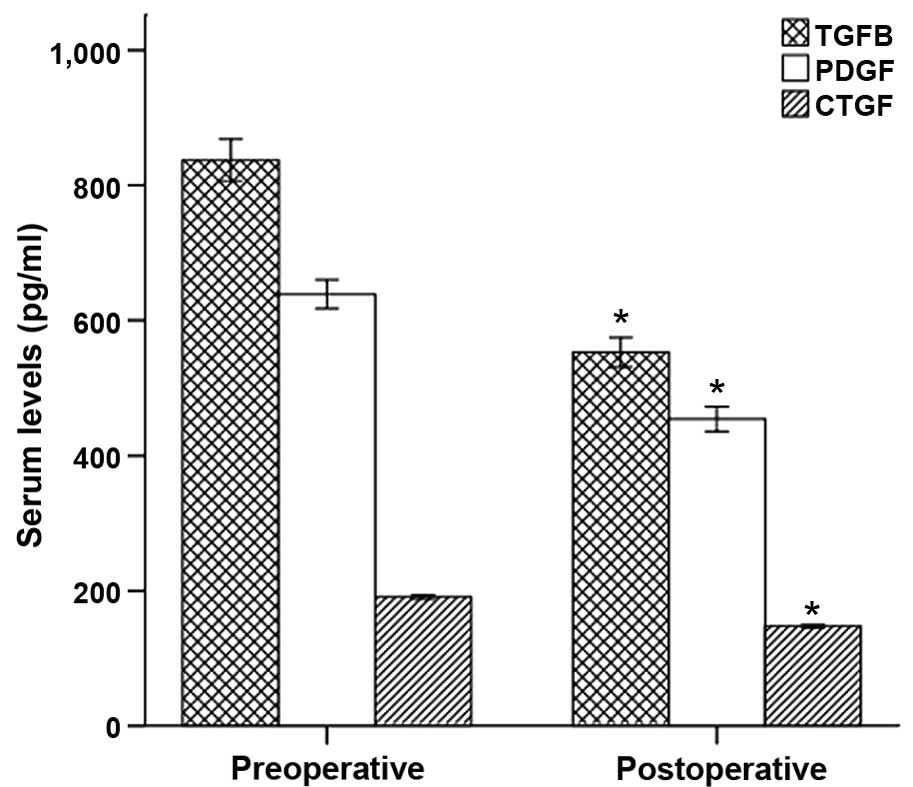|
1
|
Comar KM and Sanyal AJ: Portal
hypertensive bleeding. Gastroenterol Clin North Am. 32:1079–1105.
2003. View Article : Google Scholar : PubMed/NCBI
|
|
2
|
Augustin S, González A and Genescà J:
Acute esophageal variceal bleeding: Current strategies and new
perspectives. World J Hepatol. 2:261–274. 2010. View Article : Google Scholar : PubMed/NCBI
|
|
3
|
Kovalak M, Lake J, Mattek N, Eisen G,
Lieberman D and Zaman A: Endoscopic screening for varices in
cirrhotic patients: Data from a national endoscopic database.
Gastrointest Endosc. 65:82–88. 2007. View Article : Google Scholar : PubMed/NCBI
|
|
4
|
Groszmann RJ, Garcia-Tsao G, Bosch J,
Grace ND, Burroughs AK, Planas R, Escorsell A, Garcia-Pagan JC,
Patch D, Matloff DS, et al: Beta-blockers to prevent
gastroesophageal varices in patients with cirrhosis. N Engl J Med.
353:2254–2261. 2005. View Article : Google Scholar : PubMed/NCBI
|
|
5
|
Merli M, Nicolini G, Angeloni S, Rinaldi
V, De Santis A, Merkel C, Attili AF and Riggio O: Incidence and
natural history of small esophageal varices in cirrhotic patients.
J Hepatol. 38:266–272. 2003. View Article : Google Scholar : PubMed/NCBI
|
|
6
|
D'Amico G, Pagliaro L and Bosch J:
Pharmacological treatment of portal hypertension: An evidence-based
approach. Semin Liver Dis. 19:475–505. 1999. View Article : Google Scholar : PubMed/NCBI
|
|
7
|
Bosch J and García-Pagán JC: Prevention of
variceal rebleeding. Lancet. 361:952–954. 2003. View Article : Google Scholar : PubMed/NCBI
|
|
8
|
de Franchis R: Evolving consensus in
portal hypertension. Report of the Baveno IV consensus workshop on
methodology of diagnosis and therapy in portal hypertension. J
Hepatol. 43:167–176. 2005. View Article : Google Scholar : PubMed/NCBI
|
|
9
|
Lunderquist A and Vang J: Sclerosing
injection of esophageal varices through transhepatic selective
catheterization of the gastric coronary vein. A preliminary report.
Acta Radiol Diagn (Stockh). 15:546–550. 1974.PubMed/NCBI
|
|
10
|
Benner KG, Keeffe EB, Keller FS and Rösch
J: Clinical outcome after percutaneous transhepatic obliteration of
esophageal varices. Gastroenterology. 85:146–153. 1983.PubMed/NCBI
|
|
11
|
Chikamori F, Kuniyoshi N, Shibuya S and
Takase Y: Correlation between endoscopic and angiographic findings
in patients with esophageal and isolated gastric varices. Dig Surg.
18:176–181. 2001. View Article : Google Scholar : PubMed/NCBI
|
|
12
|
L'Herminé C, Chastanet P, Delemazure O,
Bonnière PL, Durieu JP and Paris JC: Percutaneous transhepatic
embolization of gastroesophageal varices: Results in 400 patients.
AJR Am J Roentgenol. 152:755–760. 1989. View Article : Google Scholar : PubMed/NCBI
|
|
13
|
Koconis KG, Singh H and Soares G: Partial
splenic embolization in the treatment of patients with portal
hypertension: A review of the english language literature. J Vasc
Interv Radiol. 18:463–481. 2007. View Article : Google Scholar : PubMed/NCBI
|
|
14
|
Sakata R, Ueno T, Nakamura T, Ueno H and
Sata M: Mechanical stretch induces TGF-beta synthesis in hepatic
stellate cells. Eur J Clin Invest. 34:129–136. 2004. View Article : Google Scholar : PubMed/NCBI
|
|
15
|
Okada Y, Tsuzuki Y, Hokari R, Miyazaki J,
Matsuzaki K, Mataki N, Komoto S, Watanabe C, Kawaguchi A, Nagao S,
et al: Pressure loading and ethanol exposure differentially
modulate rat hepatic stellate cell activation. J Cell Physiol.
215:472–480. 2008. View Article : Google Scholar : PubMed/NCBI
|
|
16
|
Wang Y, Dong J, Meng W, Ma J, Wang N, Wei
J and Shi M: Effects of phased joint intervention on IL-35 and
IL-17 expression levels in patients with portal hypertension. Int J
Mol Med. 33:1131–1139. 2014.PubMed/NCBI
|
|
17
|
Tangkijvanich P, Tam SP and Yee HF Jr:
Wound-induced migration of rat hepatic stellate cells is modulated
by endothelin-1 through rho-kinase-mediated alterations in the
acto-myosin cytoskeleton. Hepatology. 33:74–80. 2001. View Article : Google Scholar : PubMed/NCBI
|
|
18
|
Livak KJ and Schmittgen TD: Analysis of
relative gene expression data using real-time quantitative PCR and
the 2(−Delta Delta C(T)) Method. Methods. 25:402–408. 2001.
View Article : Google Scholar : PubMed/NCBI
|
|
19
|
Sun A, Shi YJ, Xu ZD, Tian XG, Hu JH, Wang
GC and Zhang CQ: MDCT angiography to evaluate the therapeutic
effect of PTVE for esophageal varices. World J Gastroenterol.
19:1563–1571. 2013. View Article : Google Scholar : PubMed/NCBI
|
|
20
|
Hadduck TA and McWilliams JP: Partial
splenic artery embolization in cirrhotic patients. World J Radiol.
6:160–168. 2014. View Article : Google Scholar : PubMed/NCBI
|
|
21
|
Sangro B, Bilbao I, Herrero I, Corella C,
Longo J, Beloqui O, Ruiz J, Zozaya JM, Quiroga J and Prieto J:
Partial splenic embolization for the treatment of hypersplenism in
cirrhosis. Hepatology. 18:309–314. 1993. View Article : Google Scholar : PubMed/NCBI
|
|
22
|
Pålsson B, Hallén M, Forsberg AM and
Alwmark A: Partial splenic embolization: Long-term outcome.
Langenbecks Arch Surg. 387:421–426. 2003.PubMed/NCBI
|
|
23
|
Tajiri T, Onda M, Yoshida H, Mamada Y,
Taniai N and Kumazaki T: Long-term hematological and biochemical
effects of partial splenic embolization in hepatic cirrhosis.
Hepatogastroenterology. 49:1445–1448. 2002.PubMed/NCBI
|
|
24
|
Wang Y, Gao J, Zhang D, Zhang J, Ma J and
Jiang H: New insights into the antifibrotic effects of sorafenib on
hepatic stellate cells and liver fibrosis. J Hepatol. 53:132–144.
2010. View Article : Google Scholar : PubMed/NCBI
|
|
25
|
Parsons CJ, Bradford BU, Pan CQ, Cheung E,
Schauer M, Knorr A, Krebs B, Kraft S, Zahn S, Brocks B, et al:
Antifibrotic effects of a tissue inhibitor of metalloproteinase-1
antibody on established liver fibrosis in rats. Hepatology.
40:1106–1115. 2004. View Article : Google Scholar : PubMed/NCBI
|
|
26
|
Pinzani M: Hepatic stellate (ITO) cells:
Expanding roles for a liver-specific pericyte. J Hepatol.
22:700–706. 1995. View Article : Google Scholar : PubMed/NCBI
|
|
27
|
Pinzani M, Failli P, Ruocco C, Casini A,
Milani S, Baldi E, Giotti A and Gentilini P: Fat-storing cells as
liver-specific pericytes. Spatial dynamics of agonist-stimulated
intracellular calcium transients. J Clin Invest. 90:642–646. 1992.
View Article : Google Scholar : PubMed/NCBI
|
|
28
|
Thoen LF, Guimarães EL, Dollé L, Mannaerts
I, Najimi M, Sokal E and van Grunsven LA: A role for autophagy
during hepatic stellate cell activation. J Hepatol. 55:1353–1360.
2011. View Article : Google Scholar : PubMed/NCBI
|
|
29
|
Brown JH, Del Re DP and Sussman MA: The
Rac and Rho hall of fame: A decade of hypertrophic signaling hits.
Circ Res. 98:730–742. 2006. View Article : Google Scholar : PubMed/NCBI
|
|
30
|
Hennenberg M, Biecker E, Trebicka J,
Jochem K, Zhou Q, Schmidt M, Jakobs KH, Sauerbruch T and Heller J:
Defective RhoA/Rho-kinase signaling contributes to vascular
hypocontractility and vasodilation in cirrhotic rats.
Gastroenterology. 130:838–854. 2006. View Article : Google Scholar : PubMed/NCBI
|
|
31
|
Riento K, Guasch RM, Garg R, Jin B and
Ridley AJ: RhoE binds to ROCK I and inhibits downstream signaling.
Mol Cell Biol. 23:4219–4229. 2003. View Article : Google Scholar : PubMed/NCBI
|
|
32
|
Murata T, Arii S, Mori A and Imamura M:
Therapeutic significance of y-27632, a Rho-kinase inhibitor, on the
established liver fibrosis. J Surg Res. 114:64–71. 2003. View Article : Google Scholar : PubMed/NCBI
|
|
33
|
Klein S, Van Beuge MM, Granzow M, Beljaars
L, Schierwagen R, Kilic S, Heidari I, Huss S, Sauerbruch T,
Poelstra K and Trebicka J: HSC-specific inhibition of Rho-kinase
reduces portal pressure in cirrhotic rats without major systemic
effects. J Hepatol. 57:1220–1227. 2012. View Article : Google Scholar : PubMed/NCBI
|
|
34
|
Kawada N, Seki S, Kuroki T and Kaneda K:
Rock inhibitor y-27632 attenuates stellate cell contraction and
portal pressure increase induced by endothelin-1. Biochem Biophys
Res Commun. 266:296–300. 1999. View Article : Google Scholar : PubMed/NCBI
|
|
35
|
Bissell DM, Roulot D and George J:
Transforming growth factor beta and the liver. Hepatology.
34:859–867. 2001. View Article : Google Scholar : PubMed/NCBI
|
|
36
|
Boettner B and Van Aelst L: The role of
Rho GTPases in disease development. Gene. 286:155–174. 2002.
View Article : Google Scholar : PubMed/NCBI
|
|
37
|
Hahn A, Heusinger-Ribeiro J, Lanz T,
Zenkel S and Goppelt-Struebe M: Induction of connective tissue
growth factor by activation of heptahelical receptors. Modulation
by Rho proteins and the actin cytoskeleton. J Biol Chem.
275:37429–37435. 2000. View Article : Google Scholar : PubMed/NCBI
|
|
38
|
Li C and Xu Q: Mechanical stress-initiated
signal transductions in vascular smooth muscle cells. Cell Signal.
12:435–445. 2000. View Article : Google Scholar : PubMed/NCBI
|













